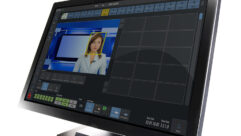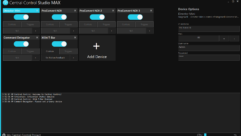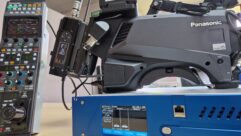PEST CONTROL
Dec 1, 1998 12:00 PM,
Richard Ensman
Imagine waking up late some morning only to discover that your digitalalarm clock had not functioned properly. Later that day, when you activateyour computer to check the company’s current cash flow statement, themonitor displays a stream of garbled, incomprehensible data, and uponcalling an associate for a discussion of your problems, you find that hisvoice mail system is inoperable. The root of these problems runs far deeperthan just having a bad day or a string of technical misfortunes. It is apossible account of what you may encounter Jan. 1, 2000, when themillennium bug rears its ugly electronic head, and some of the manners bywhich it manifests itself may be far more severe.
Although technically not a real bug, the millennium bug is a structuraldefect nestled securely away in some present-day computer code. Theproblem’s foundation can be traced back to a point many years ago whencomputer programmers, eager to conserve precious computing resources, choseto use two-digit calendar codes instead of four-digit codes. For example,rather than using all four digits to represent the year 1968, only thefinal two digits, 68, were chosen to designate the calendar year. The endresult means that much date-sensitive software throughout the world ispoised to register the year 2000 as 00. The inherent ambiguity in thisdesignation may lead a given computer or piece of software to interpret theyear as 1900 rather than 2000, and consequently, financial software maygenerate some rather bizarre numbers, especially when calculating interest.Worse, any computer, microprocessor or program with time-dependentfunctions can be susceptible to this error of interpretation, and inextreme cases, it may even fail to operate in any useful capacitywhatsoever.
Although some may be tempted to think that computer programmers did notbelieve in the inevitable coming of the year 2000, there are actually manycontributing factors. At the time, there was the prevailing assumptionamong programmers that systems would be replaced before any problemevolved, and they were working at a time where computers were not in suchwide-spread use as they are today. No one anticipated the businesscommunity’s and the private sector’s current dependence upon computers, andas time marched on, systems were enhanced and modified rather thanreplaced. To compound matters, few top managers in the corporate world holda bach-elor’s degree in computer science and are probably unaware of theproblem’s origin. It is easy to see how an if-ain’t-broke-don’t-fix-itmentality has yielded a collective head-in-the-sand attitude for so long.
As it turns out, it is not all that easy to solve the apparently simpletwo-digit date problem. For a complete solution, every piece of programcode with the two-digit commands must be located, changed and then tested.Because the date’s frequency of usage per line of code is, depending uponthe application, potentially high, adding more digits to compensate for thelack of date information requires a significant amount of additionalstorage space. Most older systems are not designed to accommodate thesechanges, and even if the requisite changes can be implemented, there isstill the matter of older date data already in the system, which has to bechanged and updated as well. To make matters worse, there was a fairlycommon practice among programmers to use 99 to represent an unknown date,meaning that the Y2K problem could appear as early as Jan. 1, 1999. Thisdoes not leave a lot of time to react, but there are steps you can take tominimize or eliminate difficulties.
The solutionIf your company has yet to execute a plan, do not wait any longer. Now isthe time to act. Moving promptly is especially important if your companywill need to secure technical assistance, which will become increasinglyscarce as the new century approaches. Additionally, solving the problem nowis something you can still do at your company’s convenience. It is farbetter to take systems off-line and repair when things may not be so busy,but business will come to an abrupt halt if the problem is left unchecked,and your clients may not appreciate your situation. Prevention is the keyto a smooth transition into the next millennium.
Another factor deserving of consideration involves your customers. It issimply intelligent business practice to safeguard the interests of yourclients whenever possible. Installing any sort of system that turns out notto be Y2K compliant can cause quite a number of problems. On the first dayof the new millennium, your company will likely be the first recipient ofan angry phone call from its customers. Any operational difficulties thatyour business may encounter will probably be suffered by your clients aswell. Ensuring Y2K compliance in all of your equipment is hard enough, butdoing the same for all recent clients is doubly so. Even a courtesy call tocustomers in which they are apprised of the situation will go a long way tosmoothing over the process.
Under the supervision of an expert, test your computers for Y2K compliance.After backing up all data and ensuring that your restore function worksproperly, set your system date to 11:59 p.m., Dec. 31, 1999. Turn yoursystem off, and activate it a few hours later. If your system date does notdisplay as January 1, 2000, the software running on your system will likelybe affected. This might include accounts receivable, budgeting, calendarsand other date-sensitive software. If your computer is relatively new-sayin the last two years or so-the probability is that your system is Y2Kcompliant, but it is not an absolute certainty. The older the system, themore likely it is that there will be a problem. Be aware that if you runproprietary software, there is always a chance that the system will readthe artificial date change as evidence of an invalid license and crash yoursoftware. Consult your vendor to be on the safe side.
Develop a list of every possible digital system that might be affected bythe millennium bug. Remember not to limit the list to company computers ornetworks. Other susceptible business systems include automatic doors,safes, fire alarms, clocks, security systems and even answering machinesand voicemail systems. In short, make it a point to consider any hardwarewith time-dependent functions.
Research all possible modifications. If the problem resides in thehardware-because two-digit date codes are embedded in a chip-a new chipmight alleviate the problem. A quick call to the manufacturer may also helpyou learn exactly what must be done to fix the problem. If, however, theproblem resides with your software, contact the publisher for patches,which they may offer for minimal or no charge. Some patches may even bedownloadable from the Internet. Failing that, obtain a newer version of thesoftware. Manufacturers and publishers are keenly aware of the problem, andmany have established technical support programs or Web-based informationresources for their customers. Take advantage of them.
Rewrite the source code. If custom programming drives your software, yourprogrammer should have carefully recorded the source code-the originalscript controlling your software-years ago. That is, should have. Check itout. If it is missing-and if common experience is a guide, it may wellbe-it is time to have a programmer recreate it or edit the available code.
Be sure to purchase new machinery with care. Any new system or applianceshould be Y2K compliant, but do not assume that it is. Although an ironcladguarantee may not be available, ask for one. Simply think of Y2K complianceas a necessary feature for both your equipment and any product you mayinstall for your clients.
Keep an open line of communication with vendors. Many firms require theirvendors’ operations to be completely Y2K compliant as a condition ofpurchasing goods and services. Anything you order could be dependent onsomeone else’s compliance, so if you need the assurance of a steady flow ofproduct, you might wish to adopt this practice. Your clients probably willnot care to know the origins of an installation delay; they will beconcerned only with the fact that the project is delayed.
Create a task force. A large-scale business operation requires three tofive knowledgeable staffers to coordinate an adequate Y2K-compliance plan.Even with a smaller operation, an informal task force of one or two closeassociates and a computer consultant will definitely help accelerate theprocess of finding a feasible solution. The primary function of these taskforces is simple-to identify potential compliance problems and solutionsand to oversee the implementation of those solutions.
Consult the necessary professionals. Ascertain any legal liability for Y2Kcompliance; chances are that your company is legally responsible for allinstalled systems. As mentioned earlier, the difficulties inherent insolving the problem increase exponentially if your company is responsiblefor any compliance problems in installed systems. Moreover, determineliability in the event that your firm contracts to deliver goods to acustomer on a timely basis but cannot meet its obligations because themillennium bug has struck. Conversely, determine your com-pany’s rights indealing with businesses that provide critical goods and services. All ofthese questions cannot be answered within the scope of this article, but ifyou are concerned about them, consult your attorney.
Lastly, generate a hypothetical worst-case scenario. Make it bad. Produce aplan of action should the millennium bug prevent your company from meetinga crucial business deadline or even disrupt its ability to function.Develop a simple back-up plan that spells out every option, from alternatesales capabilities to crisis communication with customers. Preparation isvital.
Where we standMac platforms and Windows 95 and 98 operating systems are, for the mostpart, Y2K compliant. Most current software is as well, but MS-DOS andWindows 3.1 are not, and some older PCs-such as XT, AT, 286 or 386chips-are not even capable of receiving upgrades. Almost all 486, Pentium,Pentium Pro and Pentium II chips can be made or already are compliant, butthere is no easy way to tell until each is individually checked. Also, keepin mind that even if you are running a Mac OS or Windows 95 or 98, there isno guarantee that all other programs in use on your company’s computers arelikewise compliant. These must all be checked, just as the software on any486 or Pentium machine should be.
Computers are certainly the first thing one thinks about when contemplatingthe Y2K problem, but the larger concern may be in all the microprocessorchips integral to the function of other dedicated devices. Although theoperation of many embedded microprocessors depends upon a clock of somekind, a good number of products do not rely on a calendar dating system fortheir proper operation.
Jim Turley, senior editor of Microprocessor Report, said, “The averagehousehold has 50 microprocessors, and the average car has a dozen. TheS-Class Mercedeshas 63 microprocessors, but the good news is the vast majority of thesedevices couldn’t care less what day or year it is.”
The year 2000 is almost upon us. For some-hopefully, few-it will be a timeof technical problems and even serious business losses. Take all of thenecessary steps to ensure that at the dawning of the new millennium, yourcompany is on its feet earning a healthy profit rather than sweeping up thepieces in the wake of a solvable technical problem left unchecked.










